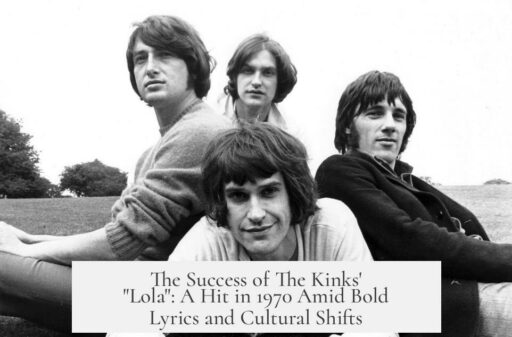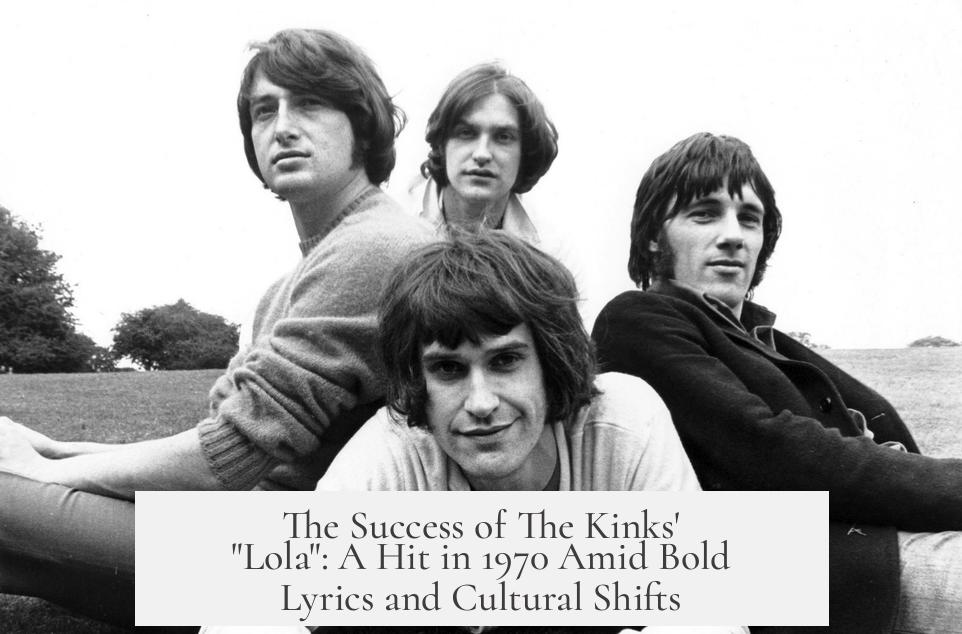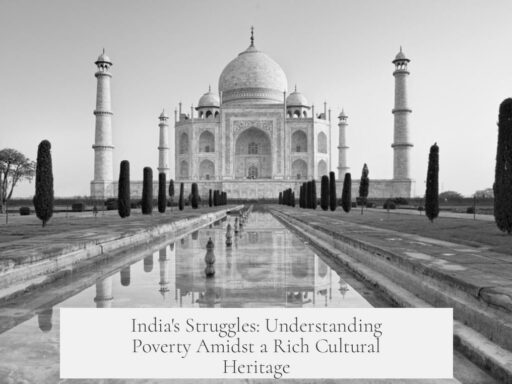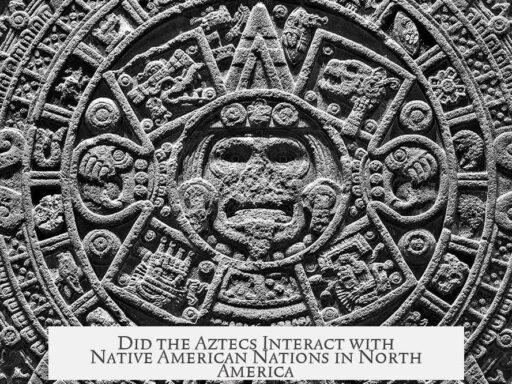The song “Lola” by The Kinks became a big hit in 1970 despite its provocative lyrical content because it aligned with evolving social attitudes, cleverly masked controversial themes with humor and subtlety, and gained broad radio acceptance in a relatively tolerant cultural moment.
The late 1960s and early 1970s marked a time when traditional views on gender and sexuality were increasingly challenged. Within British rock and wider society, alternative gender roles and sexual exploration became more visible. The Kinks embraced these themes, often blending sexual ambiguity and humor in their work. They were known for their long hair and playful, even teasing, behaviors that blurred gender lines. This openness fed into “Lola,” a story about sexual confusion and identity.
The band’s intimate knowledge of LGBT culture helped shape “Lola.” Their excursions to drag bars and interactions with trans people inspired the song’s narrative. This familiarity allowed them to create lyrics that implied—but never explicitly stated—the complexities of Lola’s identity. Listeners might have found the story intriguing or mysterious rather than shocking, as it hinted at issues without confronting them bluntly.
Early 1970s attitudes toward LGBT issues were generally more naive and less politicized than later decades. During this era, LGBT people were often misunderstood but rarely perceived as threats to society. The “Satanic Panic” and moral panics that would later scrutinize rock lyrics had not yet emerged, providing space for songs like “Lola” to gain popularity without intense backlash.
- The song’s lyrics featured playful ambiguity and a catchy melody, making it accessible to a broad audience.
- Humor eased the discomfort around the subject by framing gender confusion as amusing rather than dangerous or offensive.
Radio played a crucial role in “Lola’s” success. In Britain, the BBC required a minor change—replacing “Coca-Cola” with “cherry cola”—to comply with product endorsement rules but did not ban the song. American radio again embraced it as lighthearted. Critics noted how its ambiguous story sparked curiosity and gossip, boosting its appeal. It was a phenomenon precisely because it sounded like a typical singalong hit at first but invited deeper questions about identity.
However, different countries handled “Lola” with varying tolerance. Australian radio restricted its airplay because of cultural perceptions linking LGBT issues with criminality rather than mere eccentricity or alternative lifestyles. This contrast highlights the uneven global climate for discussions about gender and sexuality.
Public reception reflected the song’s subtle lyrical craft. Many listeners initially missed the nuances and understood it simply as a catchy tune. Even newspapers reported having to play the song multiple times before grasping its implications. Its layers allowed people to enjoy it on different levels, from surface melody to complex social commentary.
The focus of “Lola” was not just on the character Lola but on the unnamed protagonist’s disrupted assumptions about gender norms. This subtle reversal softened potential criticism by targeting societal expectations rather than any individual or group.
Finally, rock bands at the time were often regarded as playful eccentrics or entertainers rather than serious cultural threats. This perception helped “Lola” slip past more conservative gatekeepers within media and public opinion.
| Factor | Explanation |
|---|---|
| Social Context | Cultural openness to alternative gender roles and the sexual revolution allowed the song’s themes to resonate. |
| Artist Familiarity | The Kinks’ connections to LGBT scenes created authentic, humorous storytelling. |
| Radio and Censorship | Accepted on mainstream UK and US radio with minor edits, gaining wide exposure. |
| Audience Reception | Subtle lyrics invited curiosity rather than outrage, and humor deflected criticism. |
| Cultural Timing | Pre-Satanic Panic era and evolving social norms avoided moral panic over the song. |
Key takeaways:
- “Lola” thrived due to social shifts questioning gender roles during the sexual revolution.
- The Kinks used humor and subtlety to soften controversial themes.
- The song received broad radio play with limited censorship, enhancing popularity.
- Listeners often engaged with the song on multiple levels, contributing to its appeal.
- The cultural moment was more accepting, allowing such themes without major backlash.
How Does “Lola” by The Kinks Become a Massive Hit in 1970 Despite Its Bold Lyrics?
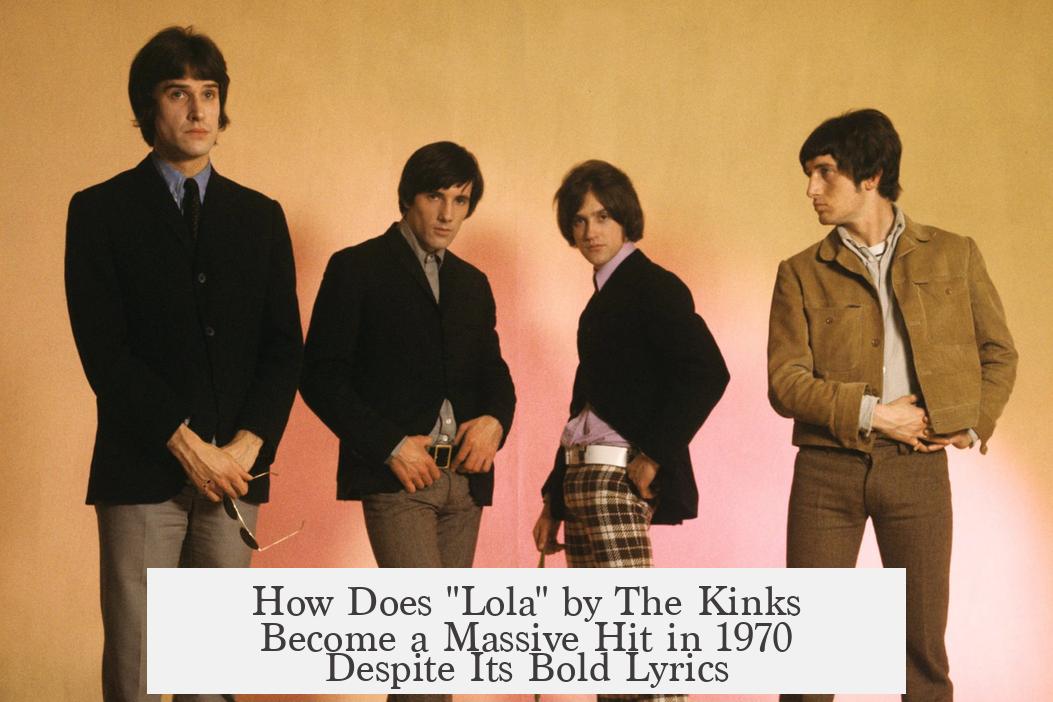
The song “Lola” by The Kinks blew up in 1970 because it tapped into a cultural moment ripe with questioning and experimentation around gender and sexuality, all while wrapping its poignant story in catchy, accessible music and humor that eased listeners into its daring content. Let’s unravel how this happened, bit by juicy bit.
First, it helps to remember the late 1960s and early 1970s were a time when society was bubbling with change. The rigid norms of gender and sexuality that ruled previous decades were loosening. The Beatles had said, “Let it be,” and the rock scene was ready to shake up society’s ideas too. The Kinks found themselves right in this swirl, pushing musical boundaries and social conversations — with a bit of cheeky flair.
A Changing Scene: The Kinks and Gender Play
The sexual revolution and the Mod movement in Britain set the stage for challenging traditional concepts of gender roles. The Kinks thrived in this environment. They didn’t just play music; they toyed with perceptions of masculinity and femininity. With their famously long hair (the longest among British rock bands at the time!), their playful, sometimes ambiguous behavior on stage, and flirtations that blurred the lines, The Kinks made their audiences both think and chuckle.
Dave Davies himself hinted at this playful confusion in songs like “Party Line,” musing humorously whether a mysterious caller was even female. This willingness to embrace and validate sexual confusion with humor prepared listeners for “Lola,” a song that provocatively probes gender and identity but does so with a wink.
Familiarity With LGBT Themes: Real Life Inspirations
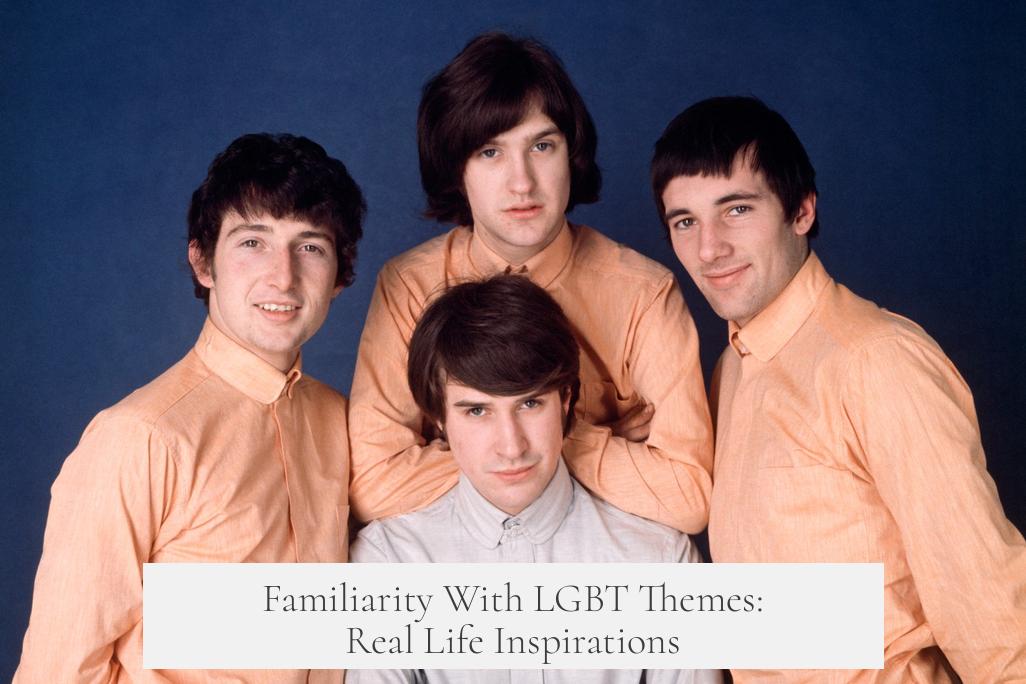
The origin stories for “Lola” are as colorful as the song itself. Some say it was inspired by a drunken band member’s dance with a black transgender woman. Others suggest it sprang from visits to drag bars — a scene soaked in gender fluidity and theatricality. The Kinks didn’t just toss out ideas; they drew from real experiences and cultural subcultures. This authenticity made the song relatable and genuine.
Why The Early 70s Could Accept “Lola”
Imagine this: It’s 1970, and the hysteria of Satanic Panic is still a decade away. Cultural watchdogs aren’t yet on a crusade to find hidden “sins” in rock lyrics. LGBT people existed largely undisturbed as a small subculture — viewed as odd, sometimes pitied, but not feared as destructive.
This more relaxed atmosphere meant songs like “Lola” could slide through radio filters with less resistance. The BBC did request a minor lyric tweak, changing “Coca-Cola” to “cherry cola” — a nod to product endorsement policies — but otherwise, “Lola” was accepted. In the U.S., the song’s quirky, catchy melody and ambiguous lyrics made listeners laugh and speculate rather than protest.
Radio’s Open Door and the Song’s Charm
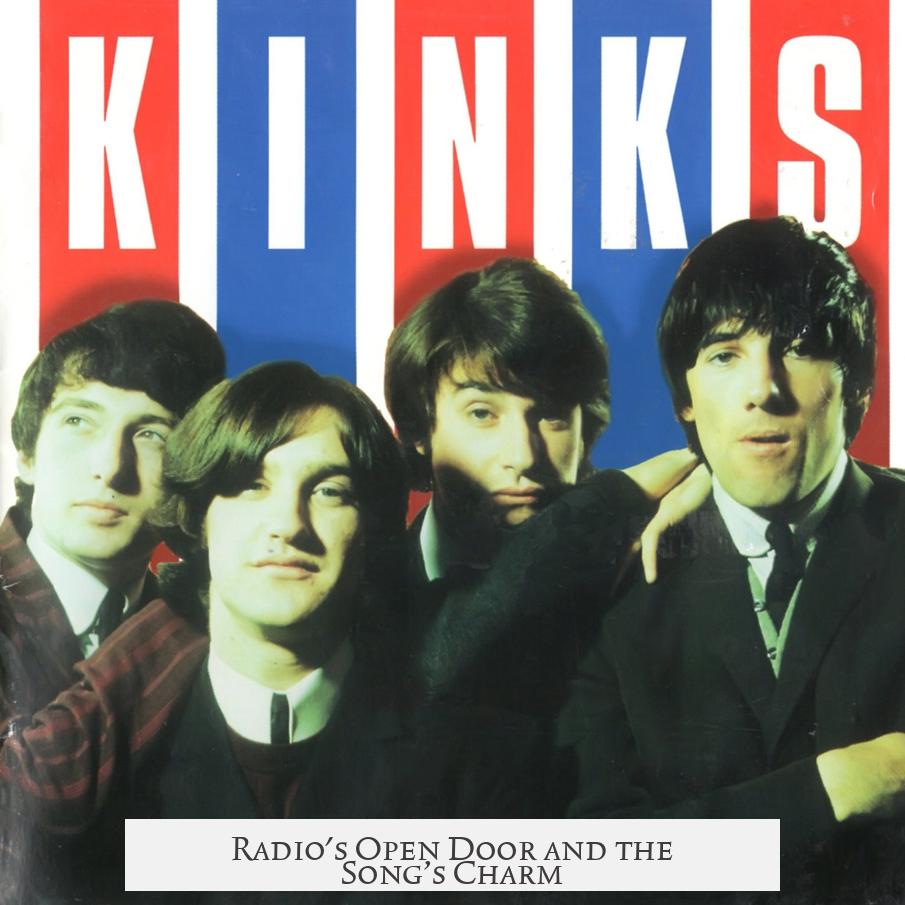
While many songs faced outright bans (like The Beatles’ “A Day in the Life” for drug references), “Lola” was mostly embraced. On British and American airwaves, it found a welcoming home. The Philadelphia Inquirer music critic Ken Tucket once called it a “pop phenomenon,” noting how the song’s melody captivated young audiences before they even unpacked its lyrical nuances.
Canadian and American media echoed this tone. A Toronto writer admired Ray Davies’ humor and rapport with audiences. The New York Daily News teasingly debated Lola’s identity and Ray’s masculinity. Rather than casting shadows, the mystery sparked curiosity and conversation, helping the song’s popularity soar.
Only in Australia was the reception more conservative. There, the pro-trans message was less warmly received, possibly because local authorities linked LGBT culture with criminality, not mere confusion. This shows how local cultural lenses influenced the song’s reach.
Subtle Humor: The Song’s Secret Weapon
Today, “Lola” reads as an unmistakable anthem for gender fluidity. But back then, it was more of a playful puzzle. In pre-queer-studies 1970, the lyrics’ deeper meaning wasn’t glaringly obvious to all. A North Jersey Record journalist literally had to play “Lola” twenty times before he caught on that Lola was probably male!
The clever songwriting kept the tune light and funny, not confrontational. The humor diffused potential controversy. This subtlety allowed listeners to enjoy the story on multiple levels – as a catchy love tale and an eyebrow-raising exploration of identity.
Who’s Really the Target? Reversing the Lens
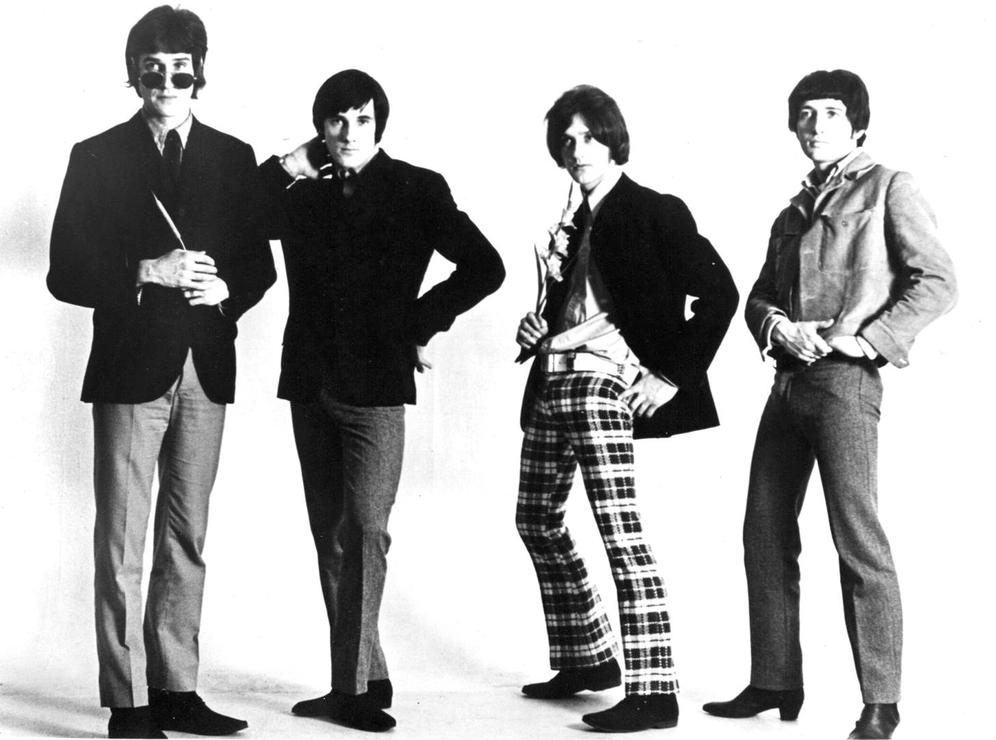
Digging deeper, the song’s gentle poke isn’t really at Lola but at the narrator. This unnamed man’s expectations about gender, masculinity, and relationships get upended. While Lola’s confidence shines, the narrator reevaluates his own identity and assumptions. That twist might have been over the heads of many listeners back then, but it adds a clever layer of introspection.
Rock Stars as Jokers, Not Villains
Lastly, it helps to remember rock stars were seen mostly as playful jesters, not threats to social order. The intense scrutiny and moral panic about rock music arrived later in the 1980s. In 1970, The Kinks were more likely to amuse than to unsettle authority figures, making their bold lyrical content less alarming and more accessible.
What’s the Takeaway for Today’s Music Lovers and Creators?
- Context is King: “Lola” didn’t just rely on shock value. It perfectly captured a cultural moment ripe for questioning norms, blending humor with real-life experiences.
- Subtlety Works: Complex themes wrapped in catchy melodies and playful lyrics invite listeners to explore without feeling lectured.
- Authenticity Resonates: Drawing from genuine encounters and communities gives songs depth and lasting appeal.
- Humor Is Disarming: Approaching sensitive topics with levity can open doors that confrontation might slam shut.
- Timing Matters: Being released before conservative backlash waves hit let “Lola” sail smoothly into popular consciousness.
So, next time you hum along to “Lola,” remember: it’s not just a catchy tune. It’s a cultural artifact embodying a brave flirtation with identity and society’s boundaries, cloaked in irresistible rhythm and a knowing grin. This blend of zeitgeist, artistry, and humor is why “Lola” wasn’t just a song — it was a phenomenon.
Why was “Lola” by The Kinks accepted on mainstream radio despite its LGBTQ-themed lyrics?
Radio stations in the UK and US found the song’s humor and catchy melody more notable than its ambiguous lyrics. The BBC only required a minor edit from “Coca-Cola” to “cherry cola.” The song was seen as amusing, not threatening.
How did the cultural context of the late 1960s and early 1970s influence the success of “Lola”?
The sexual revolution and Mod movement encouraged exploration of gender roles. The Kinks tapped into these themes when society was more open to questioning norms. Rock bands also had a playful public image then, which made such songs more acceptable.
What role did the band’s familiarity with LGBTQ culture play in creating “Lola”?
The Kinks drew inspiration from drag bars and encounters with transgender individuals. This gave their song authenticity and an insider’s perspective, helping it resonate while maintaining subtlety in its message.
Why wasn’t the meaning of “Lola” widely recognized or controversial at the time?
Many listeners initially missed the LGBTQ subtext, finding it a fun, ambiguous story. Explicit queer themes were less visible then, and listeners often focused on the cheerful tune and storytelling rather than the gender-bending content.
Did “Lola” face any censorship or bans in other countries?
In Australia, the song faced restrictions due to stricter attitudes associating LGBTQ themes with criminal activity. However, in most English-speaking countries, including the US and UK, it received little overt censorship.
